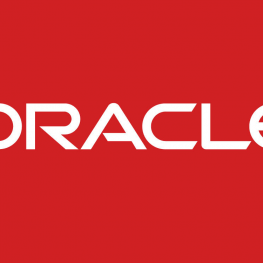Docente:
Da definire
Consulenti ed esperti del settoreIndirizzo
Torino - Corso Unione Sovietica 612 15/C Vedi mappaCategories
Corsi Aziendali e su Misura , Diurna , Elea Informatica , In Aula , Oracle , Torino - Corso TrapaniOBIETTIVI:
- Develop database and websheet applications
- Deploy the Application as a Packaged Application
- Debug your application
- Utilize dynamic components such as dynamic actions and plugins
- Manage Access Control by authorizing and authenticating users
- Utilize Team Development to drive the application development process
- Utilize and Manage Shared Components in an Application
- Add Page Processing components
- Manage database objects
- Administer Oracle Application Express Workspaces
- Load and Unload data or application components
- Manage users and groups
- Build queries of database objects and incorporate in an application
- Use and manipulate reports and forms in Oracle Application Express
PROGRAMMA:
- Maintaining Database Objects Using SQL Workshop
- Browse, create and modify database objects using Object browser
- Execute SQL scripts using SQL Command and SQL Scripts
- Build and save SQL queries using Query Builder
- Import and export data using Utilities
- Building Database Applications
- Discuss the difference between a Database Application and a Websheet Application
- Identify the components of a database application
- Create a database application from scratch
- Create a database application from a spreadsheet
- Creating Reports
- Identify the types of reports you can create
- Create, manipulate and customize interactive reports
- Create and modify classic and wizard reports
- Creating Forms
- Identify the types of forms you can create
- Copyright © 2013, Oracle. All rights reserved. Page 2
- Create and modify various types of forms
- Working with Pages and Regions
- View and edit page definitions and attributes
- Create and modify a region and subregion
- Create a Page Zero
- Add page groups and comments
- Adding Items and Buttons
- Identify different types of items
- Create items and edit item attributes
- Create and use List of Values
- Create buttons and edit button attributes
- Understanding Session State and Debugging
- Explain how APEX uses session state
- View, reference and clear session state values
- Review messages in debug mode
- Including Page Processing
- Explain the difference between page rendering and page processing
- Create computations in application pages
- Create page processes
- Create validations to verify user input
- Create branches within a application
- Building a Websheet Application
- Create a Websheet Application
- Add a Page to a Websheet Application
- Add and manipulate a Data Grid and Report
- Add Annotations to a Data Grid
- Create a Saved Report of a Data Grid
- Add Sections to a Page
- Share Websheets using an Access Control List
- Using Application and Page Utilities
- Use the Advisor to verify your application
- Manage defaults using the Attribute Dictionary
- Adding Shared Components that Aid Navigation
- Explain the use of shared components in an application
- Create and edit tabs, navigation bar entries, lists and breadcrumbs
- Displaying Dynamic Content
- Create and use a dynamic action
- Import and use a plugin
- Create and modify a chart
- Create a calendar
- Create a tree
- Working with Themes, Templates, and Files
- Explain what themes and templates are
- Copyright © 2013, Oracle. All rights reserved. Page 3
- Create a new theme from the repository and switch to the theme to make current
- Create and edit a template
- Upload and use a Cascading Style Sheet and an image
- Administering Application Express Workspaces
- Create a developer and a workspace administrator user
- Request a schema or a storage
- Monitor the developer activity log
- Implementing Security
- List the different ways to secure your application
- Differentiate between authentication and authorization
- Create an authentication scheme for your application
- Create an authorization scheme using Access Control
- Enable and configure Session State Protection
- Deploying Your Application
- Identify the supporting objects for your application
- Export an application and its supporting objects
- Import an application
- Install the supporting objects
- Managing and Maintaining the Application Development Process
- Track Features, Milestones, Bugs and To Dos
- Manage Feedback
ESERCITAZIONI E SUPERAMENTO:
All’interno di ogni modulo vi sono dei momenti di autovalutazione non vincolati che consentono all’utente di interagire con l’animazione verificando l’apprendimento dei concetti presentati. Il corso viene considerato concluso una volta fruiti tutti i contenuti.
DESTINATARI:
- Application Developers
- Business Intelligence Developer
- Developer
- Forms Developer
- System Analysts
- Technical Consultant
PREREQUISITI:
- Oracle Database: PL/SQL Fundamentals
- Oracle Database: SQL Fundamentals I
ATTESTATO:
Attestato di frequenza
Corsi su richiesta modalità interaziendale e/o personalizzata
Per le edizioni schedulate nei mesi successivi contattare la sede di competenza>
Il corso può essere erogato anche in modalità “ONE to ONE”.
Il corso è erogabile su altre sedi su richiesta.
Il costo del corso è finanziabile con i Fondi Interprofessionali.


